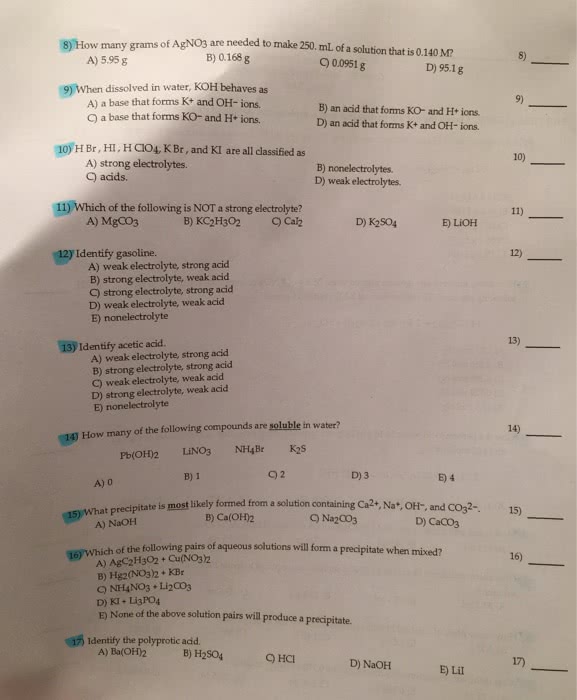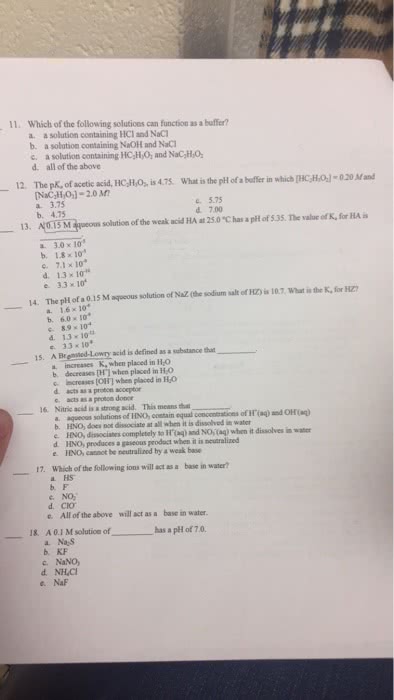CEM 142 Study Guide - Midterm Guide: Amphoterism, Titration, Ph
Document Summary
Solutes: things dissolved in water as an aqueous solution. Acids: any acid that is not one of the strong 7. Bases: anything with hydroxide (oh-) and a group i or ii element. Strong acid + strong base neutralize to form water. Strong acid + weak base forms ammonium ion. Weak acid + strong base forms a salt. Weak acid + weak base forms a salt. Ka = equilibrium constant for an acid reaction. Kb = equilibrium constant for a base reaction. Arrhenius: an acid increase the [h3o+] in solution. Bronstead-lowry: an acid donates an h+ to its conjugate base: amphiprotic: substance that can be either an acid or a base in the bronstead-lowry definition. H30+ is the strongest acid that can exist in water- everything stronger dissociates. Oh- is the strongest base that can exist in water- everything stronger dissociates. The stronger base always gets the proton when something is amphiprotic. An acid"s strength is based on oxygen"s electronegativity.



